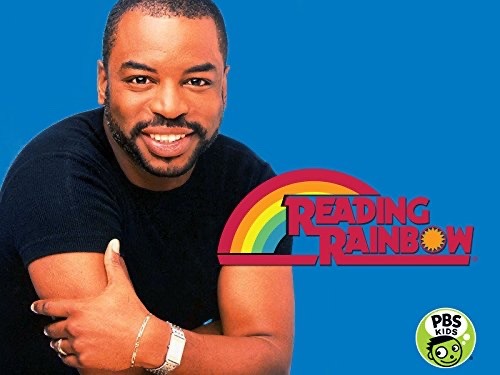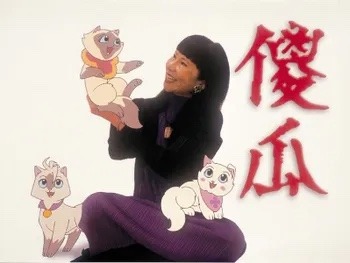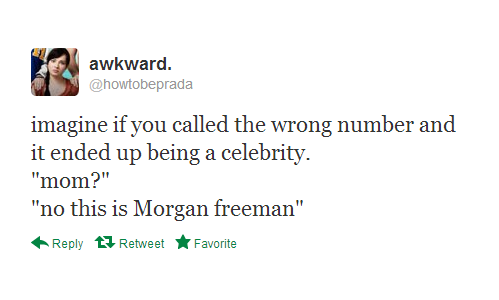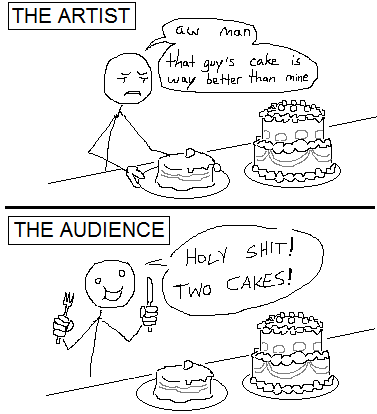Reblog To Give Your Headache To Elon Musk Instead
reblog to give your headache to elon musk instead
More Posts from Bitchy-witchy and Others
Here you go, bestie
Hey, could you do me a favor?
Could you just RB this?
The little RB statistics chart is so pleasant and stimmy to look at and I want to see what it looks like when it gets really REALLY huge because it makes me think of some deep sea lifeform
🐰💜💛x🧸🙇♀️❤️💙 reminds me of Donald and Daisy from The Three Musketeers! 🤺💜💗❤️💙

Okay time for the PBS Kids essay
Read it under the cut!
:readmore:
In 1968, before there was PBS Kids proper, there was Mr. Roger’s Neighborhood. While it came several decades before the children’s block, it laid the foundation for the themes and values present in every facet of the network’s history.
Mr. Roger famously hated children’s programming at the time. To him, it all was droll and useless. But he didn’t dissuade the medium entirely— he saw potential. Potential that led to a few smaller television jobs, and eventually the creation of Mr. Roger’s neighborhood.
Rogers didn’t invent educational TV for children, but he did perfect it. He poured real heart and soul into probably the most sincere, heartfelt program in history.
Honestly, he could have his own essay. The more things you learn about the real man of Mr. Rogers, the more you’ll like him.
Anyway, the biggest thing that makes PBS different is the fact that it earns money through grants, fundraisers, and private donors— not through sponsorships and merchandise sales. This way, PBS Kids can push programming that it feels is important, rather than programming that merely sells well.
This also means PBS is less afraid of pushing social boundaries. Money doesn’t go away when their shows become subjects of debate— and Mr. Rogers took full advantage of this.
For context, this was 1969. The Jim Crow era had just barely, barely ended. Pool segregation was still very much legal.
Mr. Rogers sharing a pool and a towel with the Black Mr. Clemmons was a pretty big deal at the time— especially on a show made for children.
Rogers was far from the untouchable sacred cow of today. When he was alive, he had a large number of detractors. Let’s just say that scene didn’t fly nicely by everyone.
Just one year after the debut of Mr. Roger’s came Sesame Street.
While Mr. Roger’s was made for all children, Sesame Street had the explicit goal of supplementing the education of underserved communities— especially inner-city Black (and later Latino) children.
While it was made to be accessible to children of all races and income levels, they definitely went the extra mile to make it something special for inner-city Black and Brown kids. (Why do you think it it’s “Sesame Street” and not “Sesame Cul-de-Sac”?)
At the time, a wholesome, sweet show set in a brownstone street was practically unheard of.
Jon Stone, the casting director, deliberately sought to make the cast as rich with color as he possibly could, bringing on a huge amount of Black talent such as Loretta Long, Matt Robinson, and Kevin Clash, as well as featuring Black celebrities as guest stars. Later, the show would expand its horizons, bringing on actors from Latino, Asian, Native American, and many more backgrounds.
White actors were and still are a minority on show.
In addition to letters and numbers, the purpose of Sesame Street is clear: make kids of color know that they’re smart, beautiful, and loved.
It doesn’t get more explicit than this.
I want to point out this comment because it’s funny

You’re telling me this bitch isn’t Hispanic???

Anyway, these two were followed up by Reading Rainbow in 1983. And guess what?

That’s right. Non-white focus.
These three shows, (along with other, lesser-known programs like Lamb-Chops Play Along, Newton’s Apple, and Shining Times Station (who featured Ringo Starr himself?? seriously how did that happen and why does no one talk about it) and some other nostalgic favorites like Bill Nye the Science guy, The Magic Schoolbus, Arthur, and Thomas the Tank Engine) aired on the new PTV block, which evolved into PBS Kids in 1999, bringing along Between the Lions, Dragon Tales, and many more.
Arthur is another stand-out that I’d like to talk about— it doesn’t have the same racial focus of Sesame Street, but it does focus on different income levels. The characters have various housing situations, from apartments to mansions to no home at all.
It also takes cues from Sesame Street and Mr. Roger’s in regards to talking about tough topics, though as Arthur has a slightly older target audience, it discusses things through stories rather than talking directly to the audience.
Cancer, religion, workplace discrimination, along with current (at the time) events such as 9/11 and Hurricane Katrina are all discussed on the show.
Another big focus on Arthur is disability. For once, they don’t stick a character in a wheelchair and then pretend he’s not in a wheelchair. A striking number of major characters either develop or get diagnosed with physical disabilities and/or neurodivergences, such as asthma, severe food allergies, and dyslexia, and they deal with them in very realistic ways.
A handful of minor characters have more obvious disabilities, and THANK GOD they go beyond the trite messaging of “disabled people can do everything abled people can do! everyone clap now!”
One episode in particular has the awesome message of “holy shit stop trying to help me all the time— it’s patronizing as fuck. I can get around just fine without you stepping on eggshells and trying to be the hero all the fucking time”
There are sooo many other shows I could talk about, but I can’t write about them all. I’m definitely gonna point out some more standout ones, though.
Sagwa, the Chinese Siamese Cat
Created by Chinese-American woman Amy Tang

Dragonfly TV
Features a multitude of female and non-white scientists to foster an interest in science with kids in those groups

Maya & Miguel
One of the network’s first Hispanic-led shows

SciGirls
I shouldn’t have to explain what the goal of this one was.

Molly of Denali
When was the last time you saw a show that treated Native Americans as people? Much less a children’s show? 90% of the cast is Athabascan, and the show revolves around Athabascan culture, not shying away from topics like boarding schools and modern-day racism. Most of the writers are also Athabascan, and the show even has an official Gwich’in dub!

It’s this commitment to real, authentic social justice that makes PBS Kids so much different from its competitors. Could you imagine the Paw Patrol dog looking at the camera and earnestly discussing what happened to George Floyd? I don’t think so— but Arthur talked specifically about it, Sesame Street did an hour long special about race in general, and the network itself made a 30 minute special.
Disney Jr. could never. (Other than trying to teach colorblindness, of course.)
I’m gonna have to cut this into two parts, since I just hit the image limit
Holy shit...

When people say, “nature is my religion” are they talking about flies that feed on shit, maggots in decomposing corpses, lionesses with stained teeth and mouths full of blood? Are they talking about floods and fires and things from which we should always run? Are they talking about carcasses, rot, death?
Or do they just mean “this particular copse of benign trees is my religion”



got a new phone so I made myself wallpapers of the boys :D
feel free to use them too btw

People have written a lot of touchy-feely pieces on this subject but I thought I’d get right to the heart of the matter





today we post everett true
not romantic not platonic but a secret third thing [what would happen between earth and the moon if the earth stopped spinning as illustrated by xkcd randall munroe]

-
 mxaether reblogged this · 4 weeks ago
mxaether reblogged this · 4 weeks ago -
 mxaether liked this · 4 weeks ago
mxaether liked this · 4 weeks ago -
 satan-666s-stuff reblogged this · 4 weeks ago
satan-666s-stuff reblogged this · 4 weeks ago -
 a-pyramid-with-eyes reblogged this · 4 weeks ago
a-pyramid-with-eyes reblogged this · 4 weeks ago -
 krystal-prisms reblogged this · 4 weeks ago
krystal-prisms reblogged this · 4 weeks ago -
 the-invisible-queer reblogged this · 4 weeks ago
the-invisible-queer reblogged this · 4 weeks ago -
 kawhh reblogged this · 4 weeks ago
kawhh reblogged this · 4 weeks ago -
 kawhh liked this · 4 weeks ago
kawhh liked this · 4 weeks ago -
 kipperkin-remastered reblogged this · 4 weeks ago
kipperkin-remastered reblogged this · 4 weeks ago -
 kipperkin-remastered liked this · 4 weeks ago
kipperkin-remastered liked this · 4 weeks ago -
 mossathenium-time reblogged this · 4 weeks ago
mossathenium-time reblogged this · 4 weeks ago -
 chickenclip liked this · 4 weeks ago
chickenclip liked this · 4 weeks ago -
 raiziso reblogged this · 4 weeks ago
raiziso reblogged this · 4 weeks ago -
 raiziso liked this · 4 weeks ago
raiziso liked this · 4 weeks ago -
 blackberry-nightingale reblogged this · 4 weeks ago
blackberry-nightingale reblogged this · 4 weeks ago -
 lace-quantum reblogged this · 4 weeks ago
lace-quantum reblogged this · 4 weeks ago -
 lace-quantum liked this · 4 weeks ago
lace-quantum liked this · 4 weeks ago -
 jaypostssometimes reblogged this · 4 weeks ago
jaypostssometimes reblogged this · 4 weeks ago -
 me-12s-stuff reblogged this · 4 weeks ago
me-12s-stuff reblogged this · 4 weeks ago -
 me-12s-stuff liked this · 4 weeks ago
me-12s-stuff liked this · 4 weeks ago -
 spiderdragon15 liked this · 4 weeks ago
spiderdragon15 liked this · 4 weeks ago -
 galvantula-mechgirl-ovipositor reblogged this · 4 weeks ago
galvantula-mechgirl-ovipositor reblogged this · 4 weeks ago -
 galvantula-mechgirl-ovipositor liked this · 4 weeks ago
galvantula-mechgirl-ovipositor liked this · 4 weeks ago -
 bluehax6 reblogged this · 4 weeks ago
bluehax6 reblogged this · 4 weeks ago -
 bluehax6 liked this · 4 weeks ago
bluehax6 liked this · 4 weeks ago -
 cheacegirl reblogged this · 4 weeks ago
cheacegirl reblogged this · 4 weeks ago -
 guiltiest-gear reblogged this · 4 weeks ago
guiltiest-gear reblogged this · 4 weeks ago -
 pumpkaboots liked this · 4 weeks ago
pumpkaboots liked this · 4 weeks ago -
 foresttheblep reblogged this · 4 weeks ago
foresttheblep reblogged this · 4 weeks ago -
 nothing-but-void-and-blood reblogged this · 4 weeks ago
nothing-but-void-and-blood reblogged this · 4 weeks ago -
 infinitetrigger-uw reblogged this · 4 weeks ago
infinitetrigger-uw reblogged this · 4 weeks ago -
 moth-lover-not-mother reblogged this · 4 weeks ago
moth-lover-not-mother reblogged this · 4 weeks ago -
 moth-lover-not-mother liked this · 4 weeks ago
moth-lover-not-mother liked this · 4 weeks ago -
 itsnotevenridiculous reblogged this · 4 weeks ago
itsnotevenridiculous reblogged this · 4 weeks ago -
 jazzyclarinet reblogged this · 4 weeks ago
jazzyclarinet reblogged this · 4 weeks ago -
 earlgraytay liked this · 4 weeks ago
earlgraytay liked this · 4 weeks ago -
 elementalwriter67 reblogged this · 4 weeks ago
elementalwriter67 reblogged this · 4 weeks ago -
 cartilogenophobe reblogged this · 4 weeks ago
cartilogenophobe reblogged this · 4 weeks ago -
 thecunninglittlevixen reblogged this · 4 weeks ago
thecunninglittlevixen reblogged this · 4 weeks ago -
 lucariow02 reblogged this · 4 weeks ago
lucariow02 reblogged this · 4 weeks ago -
 wonbinbabygirl liked this · 4 weeks ago
wonbinbabygirl liked this · 4 weeks ago -
 insouciantlypersnickety reblogged this · 4 weeks ago
insouciantlypersnickety reblogged this · 4 weeks ago -
 thereforeiamfine reblogged this · 4 weeks ago
thereforeiamfine reblogged this · 4 weeks ago -
 thereforeiamfine liked this · 4 weeks ago
thereforeiamfine liked this · 4 weeks ago -
 gleshye reblogged this · 4 weeks ago
gleshye reblogged this · 4 weeks ago -
 rosewatergail liked this · 4 weeks ago
rosewatergail liked this · 4 weeks ago -
 fishermod liked this · 4 weeks ago
fishermod liked this · 4 weeks ago

18. prefers she/her. any pronouns are fine. I put the major L in LGBT.
282 posts